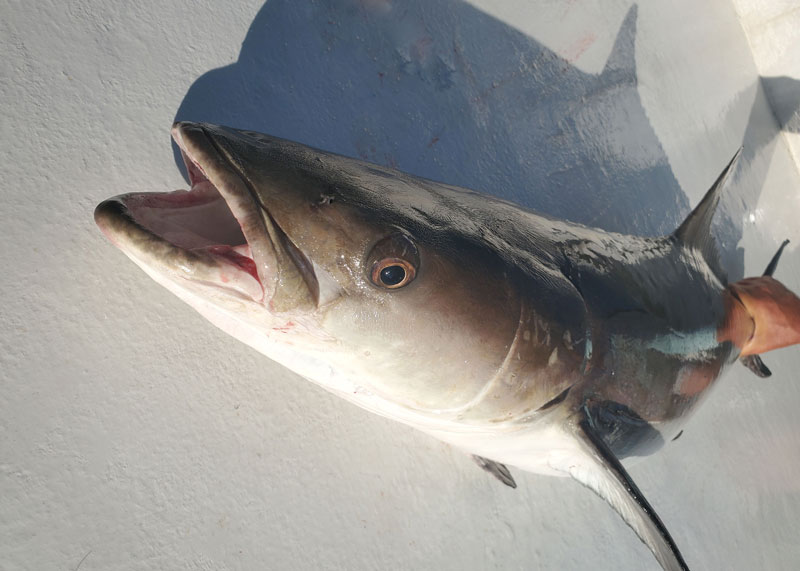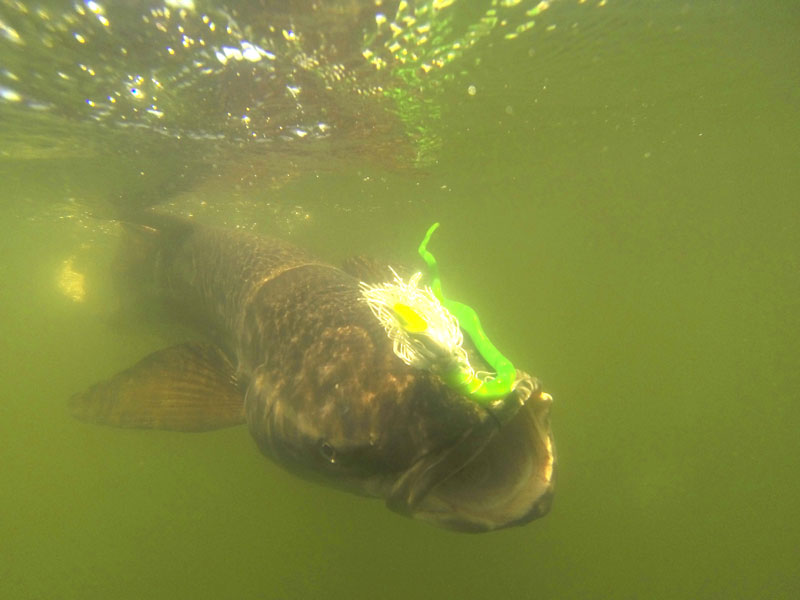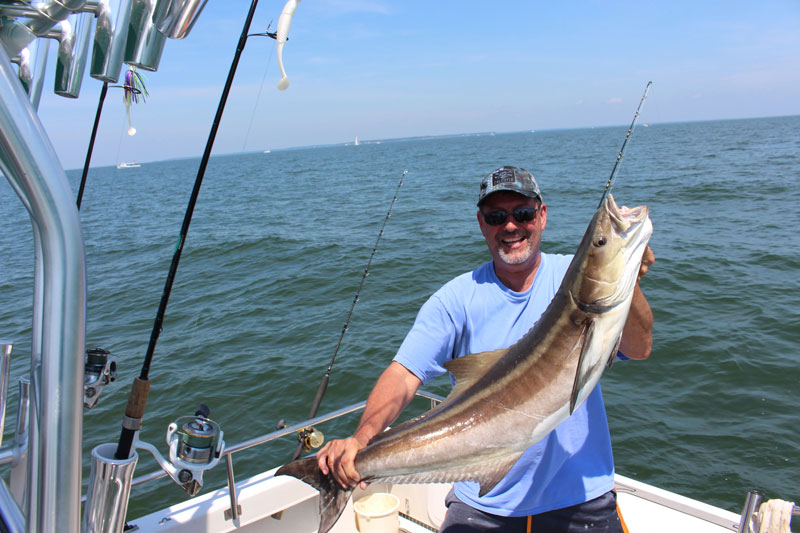We get just three months to target cobia on the waters of Chesapeake Country and for many anglers, those 90 days are more exciting than any other season. As we go to press with the September edition those days are drawing short. If you want to make the most of what remains keep these late summer cobia fishing tips in your back pocket — and if you’re seeing this after September 15 all we can say is sorry, but why the heck didn’t you check out FishTalk sooner?!?

Bouys for Cobia
Everyone knows cobia hang out around buoys and flotsam, right? And most of us can remember catching fish off buoys at some time in the past, so we like to check them on a regular basis. But dig back deep into that memory bank and try to think of when you’ve been successful with this tactic. Has it usually happened early in the season, or did it happen towards the end?
Serious sharpies with some experience under their belts will probably have noticed at some point that early in the season it’s often a waste of time to focus on going from one buoy to the next. In June you’ll usually draw a blank, in July you generally won’t have a tremendous amount of success, and the later the season gets the more often you’ll spot fish. That’s not to say you’ll never catch cobia off buoys early in the season and this generalization is less true in the ocean and along the coast than it is up inside the Bay. But as a general rule of thumb, the later the season gets the more you should be peeking at buoys and large items you might spot floating on the water’s surface.
The same goes for rays. Yes, you might spot cobia among rays at any time of the season. But you’ll see it happening more and more often as the season progresses. And for the next few weeks it’s more likely than ever that spotting a school of rays at the surface will lead to spotting the big man in the brown suit — give those rays a glance or two early on but at this time of year sharpen your focus on them.

Trolling Hoses
Another tactic that seems to pick up steam as we get deeper and deeper into the season is trolling tubes (or hoses - same thing!). Particularly for anglers in northern areas of the Cobia’s range, pulling 24” red and pink hoses behind number-two and number-three planers is probably the most productive late-season tactic of all.
Two factors contribute to this being a top producer: first, the farther north you go the more the fish tend to be scattered, fewer in number, and tougher to locate, so covering lots of ground is a good move. Trolling lets you do so. And second, the water clarity becomes lower and lower the farther up the Bay you go. As a result, sight fishing north of the Target Ship or thereabouts is often very difficult. You can still spot fish that are right on the surface but those just a couple-few feet or more beneath the waves are essentially invisible — unless you pull a hose right past their nose.
Are You Getting Jelly? Jellyfish?
Another common transition you’ll see late in the season is cobia hanging out along tidelines and seams in the water, which may have a temperature change and at this time of year often gather foam, small bits of flotsam, and a key indicator to look for: jellyfish. Yes, jellyfish.
Strong tidelines can gather jellyfish into rather large, dense (and somewhat scary!) congregations. Cobia won’t be mixed in with the jellies themselves, but when you see those jellyfish piled up you know the area is experiencing a collision of water bodies and tide. There’s a good chance you’ll also be able to see a seam in the water running in either direction from the jellyfish, showing you a potential path to the action for both sight fishers and trollers.

And, What About Chumming?
Yes, of course you can still go chumming for cobia, drop down bunker chunks and live eels, and catch fish during this portion of the season. But for whatever reason, while it generally is the best move early on, chumming’s effectiveness does seem to fade as the season progresses and these other tactics begin to shine brighter. That said, if you do set out to chum note that some anglers believe bunker chunks are the top offering early on but live eels take over as the best bait as the season progresses. If you normally set out four bunker chunks and two eels, at this time of year you might be better served by setting out two bunker chunks and four eels.
Okay anglers: time is running short. These big beasts are just about as potent a predator as you’ll find in our waters, they grow far bigger than most, and they fight like few other fish to visit our waters. Don’t let the season end without taking one more cruise for those cobia.